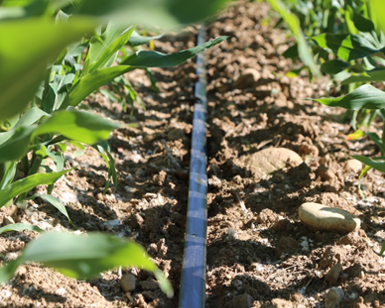
Modern Irrigation
Next-Gen Sensors, Digital Tools, Precision Application
The most innovative approaches to water conservation on today’s farms usually begin with collecting data in real time, using a new generation of field and satellite sensors that measure soil moisture levels. Next, farmers can evaluate that data with digital tools such as advanced software and analytics. When necessary, they can apply water with precision tools like drip irrigation that provide only the amount of water each plant needs.


